10 Giant Menorahs That Will Light Up for Hanukkah in NYC
From Brooklyn to the Bronx, we’ve rounded up the most exciting giant menorahs that will light up throughout the next eight evenings!



Nearly 30,000 students attend Columbia University, located in Morningside Heights in New York City. But how many know the many secrets of the school? Here are 15 fun facts about the institution:
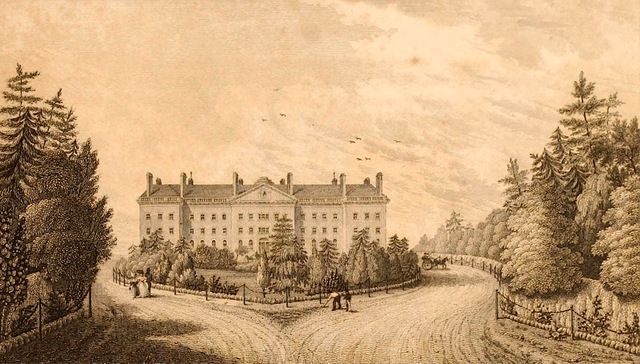
The current location of Columbia University was built on the former Bloomingdale Asylum, a public hospital petitioned for by the doctors at King’s College (formerly Columbia University pre-Revolutionary War). The 26-acre bucolic institution extended over to where the Cathedral of St. John the Divine is today. Columbia University moved to this location in 1897, with a campus designed by McKim, Mead and White.
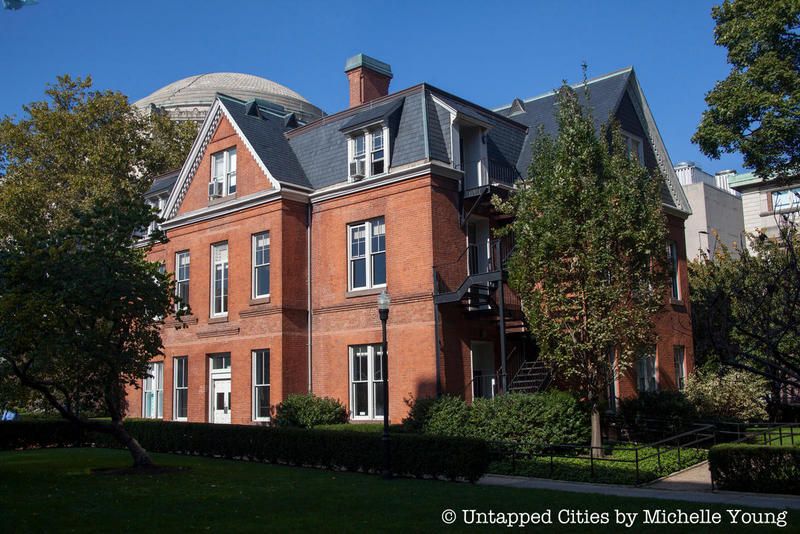
Of the original buildings from the Bloomingdale Asylum, only Buell Hall remains. Built in an elevated architectural style to house wealthy gentlemen suffering from mental affliction, it was moved to its current spot from across the campus. Today it houses the Maison Française at Columbia University.
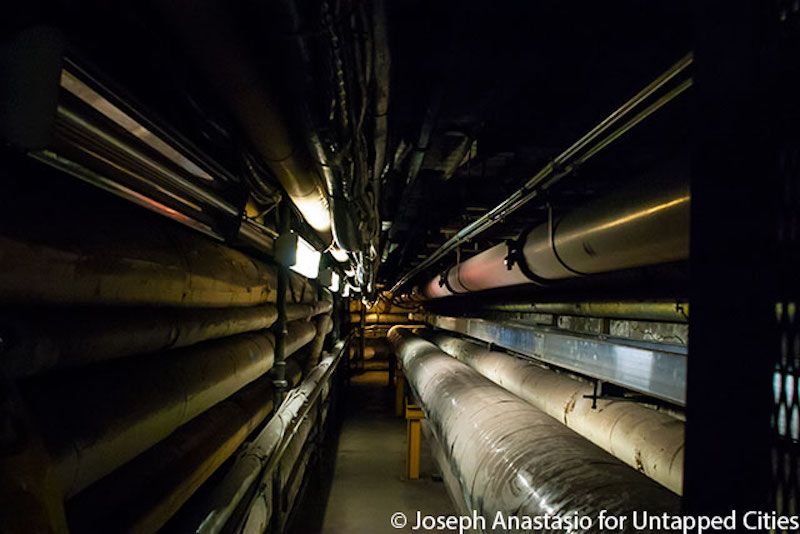
What is now possibly the worst kept secret is the intricate network of tunnels that connects many of the school’s buildings. The tunnels date back to the days of the Bloomingdale’s Insane Asylum. The tunnels are still in use today, though the university is increasingly limiting access due to rogue tunnel explorers and other hazards, many of which are remains from another famous use for the tunnels: the Manhattan Project.

As King’s College, Columbia University began in the vestry hall at Trinity Church, then moved to a campus near present-day City Hall. From 1847 to 1897 the campus was located in Midtown from 49th and 50th Streets, between Madison and Park Avenue. A common misconception is that Columbia’s Midtown campus became part of Rockefeller Center, but this was a separate piece of land known as the “Upper Estate.” Though Columbia considered moving the campus there, the land was sold to the Rockefellers and the proceeds started the university’s endowment. It is said however that “the townhouse that first housed Barnard College may have been located at the corner of the future site Rockefeller Center.”
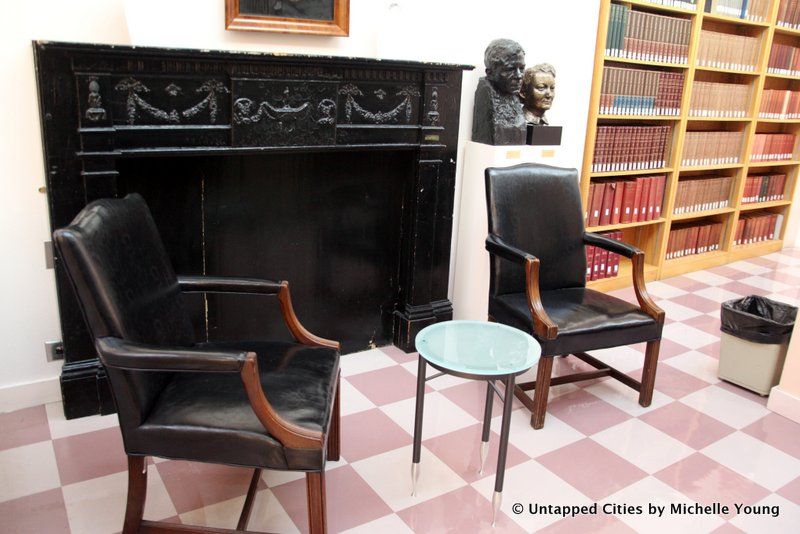
Located in Butler Library at Columbia University, the Raven Mantel, in front of which Edgar Allen Poe wrote “The Raven” was located in Poe’s room at the Brennan farmhouse. It was saved when the farmhouse was demolished because it had a cameo in the poem and Poe even allegedly etched his initials into it. Check out our previous coverage of the Mantel’s odyssey from farmhouse to Columbia, where Untapped Cities’ editor Benjamin Waldman discovered it lying fallow in a storage room. It was later moved to a more visible location in the Rare Book & Manuscript Library, after articles by Untapped staff in Columbia Magazine and The New York Times. See 9 other places to remember Edgar Allen Poe in NYC.
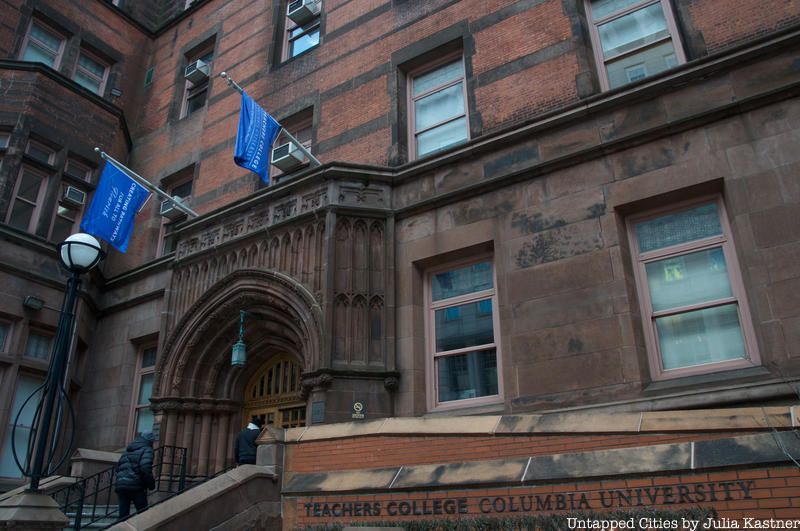
Built in 1904, this is considered the oldest pool still in use in New York City, and one of the oldest in the country. The pool was built as a part of the largest gymnasium for women in the country, the Frederick Ferris Thompson Memorial Building. Now the pool is a part of the Teachers College of Columbia University and has changed little since its original construction– as a turn-of-the-century European take on Roman baths. See 9 more notable swimming pools in NYC.
If someone asked you to picture a college lecture hall, would the image you come up with look something like this? If so, you’ve probably been watching too many movies. This is Columbia University’s 309 Havemeyer Hall, the most filmed college classroom ever, as reported by Scouting NY and numerous university sites. That’s right–309 Havemeyer has apparently been seen in over a dozen films, including the first three Spider-Man films, Kinsey, and Spike Lee’s Malcolm X.
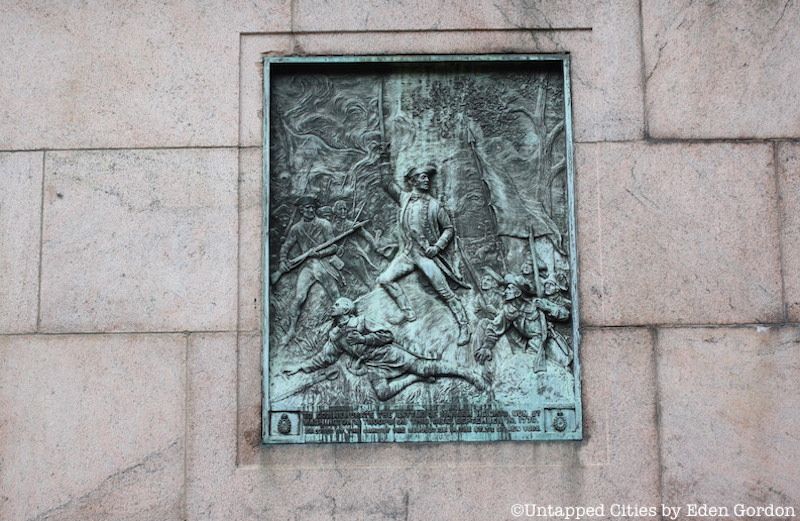
The Battle of Harlem Heights in September 1776 was a morale turning point in the Revolutionary War, particularly after the Americans suffered losses in the Battle of Long Island and at Kips Bay. The Americans and the British skirmished at what is now 106th Street and Broadway and the fighting extended northwards to 125th Street. The majority of the battle was fought around 120th Street and Riverside Drive, but the Americans were able to push the British back to 106th Street. George Washington noted of this maneuver, “This little advantage has inspired our troops prodigiously. They find it only requires resolution and good officers to make an enemy give way.” Today, a plaque on Columbia University’s Math Building near 118th Street and Broadway marks the historic battle.
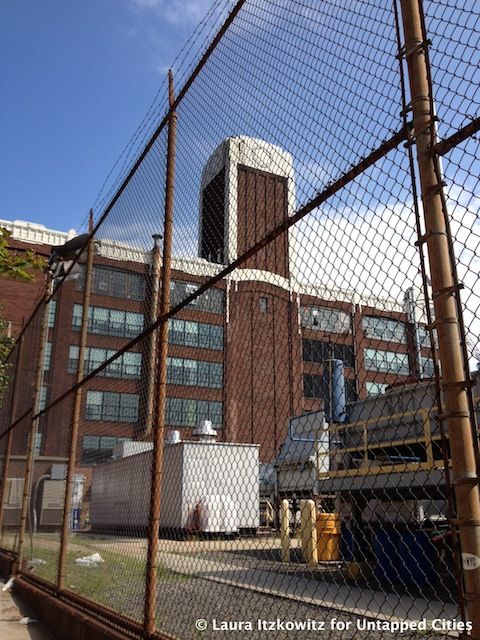
With only a small logo to hint at the building’s past, Columbia’s “Studebaker” building is just that–a former automobile factory. Built in 1923 by the Studebaker automobile company, the facility originally served as a finishing factory and distribution center for the highly coveted and expensive luxury vehicles that made Studebaker a household name. In its heyday, the factory would have been filled with these vehicles and their parts, along with dealers and mechanics in training.
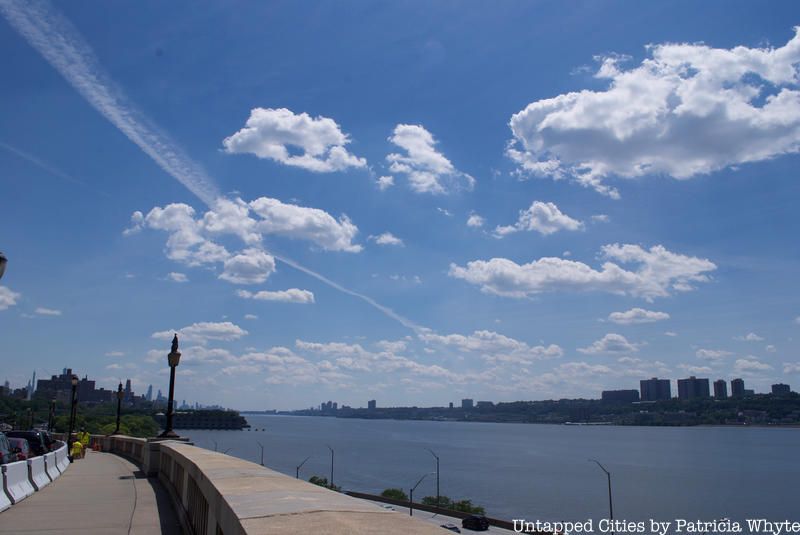
Before they became the voices of the Beat Generation, the then unknown Jack Kerouac, William S. Burroughs, and Allen Ginsberg were involved in a story of intrigue and murder that played out on the Columbia University campus and Riverside Park, that became the focus of the movie Kill Your Darlings in 2013. Read in detail about the story, which Kerouac and Burroughs helped cover up, here.
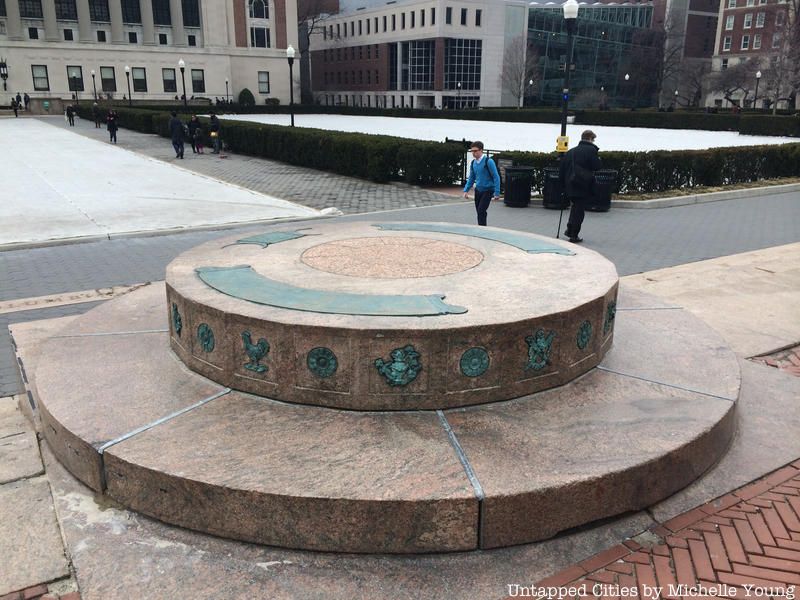
Many assumed this sphere centrally located on the Columbia campus had been destroyed but, almost 60 years later, in 2001, the sundial resurfaced in a field of Ann Arbor that may or may not have belonged to an individual with university affiliations. The current sundial has a less exalted history, with the sculptor unknown. The story behind what happened to the original sundial remains somewhat mysterious and the base remains on campus, engraved with the words Horam Expecta Veniet or await this hour, time will come.

Research for the Manhattan Project, that led to the creation of the atomic bomb, was conducted in Schermerhorn Hall and Pupin Hall (shown) on Broadway and 120th Street. The basement hosted a cyclotron, a particle accelerator. In 1939, Columbia scientists replicated a German experiment that proved the possibility of nuclear fission. Pupin is also where FM radio was created.
There was also a nuclear testing lab inside Columbia’s Prentis Hall at the Manhattanville Campus. The Prentis building was once a former Sheffield Farms pasteurization facility and milk bottling plant that was built in 1909. Called the Heat Transfer Research Facility, Columbia’s lab predated the creation of any national labs. Starting the 1950s, scientists and engineers tested “generations of nuclear reactor fuel assemblies,” at the lab, according to Harry Hutchinson, author of “Powering Down” in an article for Mechanical Engineering. It was closed in 2004.

Every other Friday night, the Columbia Astronomy Public Outreach series allows New Yorkers to peek through the smog while standing on a piece of science history atop Pupin Hall, of Manhattan Project fame, with a public lecture series by members of Columbia’s astronomy department, followed by 90 minutes of stargazing if the weather permits. During the summer months, a sci-fi movie and discussion replace the lectures, and stargazing takes place in front of Pupin.
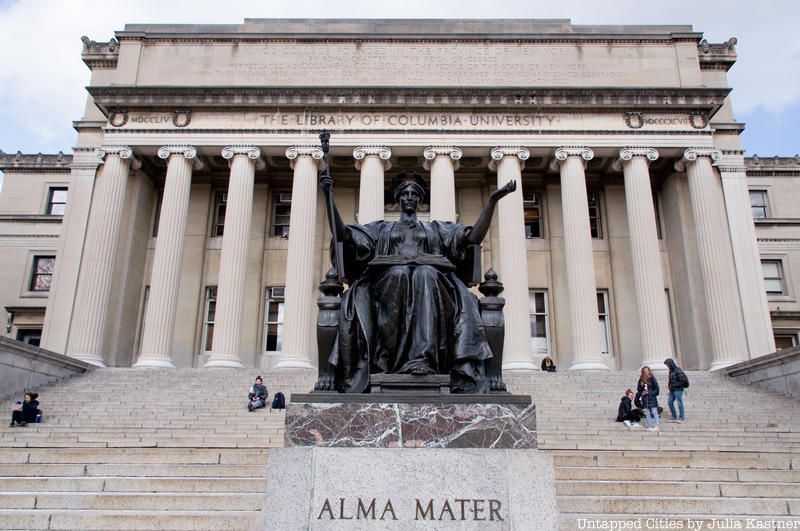
The Alma Mater statue sits imposingly at the foot of Columbia University‘s Low Library. Student legend has it that the first student in each incoming class to spot the owl hiding in the folds of the statue will be the valedictorian of the class.
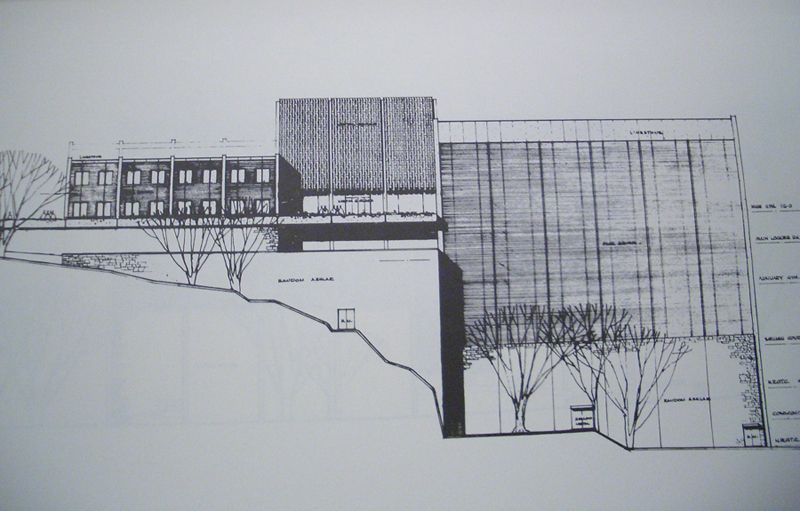
In 1960, Columbia University proposed the construction of a new gym in Morningside Park. A way to keep students fit, beautifying the crumbling Morningside Park. A win/win, right? Not so much. The construction of this gym started a huge student protest/strike which temporarily shut down Columbia and was part of a huge chain of student uprisings around the world.
So what was wrong with this gym? It had two doors: one for Harlem community residents who were predominantly black and one for students who were predominantly white. According to WikiCU, The door for community residences was in the back of the gym on a lower level, while the door made available to students was a grand entrance in the front of the gym. The policy was initiated the year of Martin Luther King Junior’s assassination, only adding to the tension already in the air.
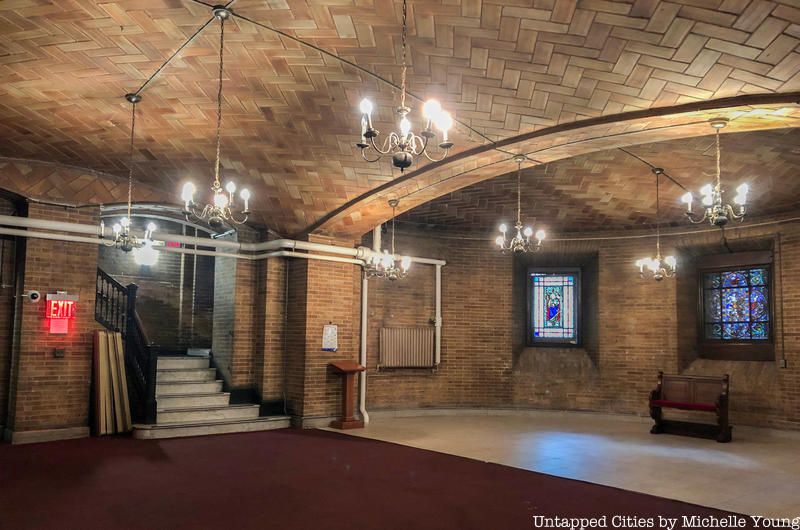
Guastavino was once a name that was a household word amongst architects. The Guastavino Company, led by a father-son team of Spanish Immigrants, oversaw the construction of thousands of thin-tile vaults across the United States, including over 200 in New York City, between the 1880s and 1950s. One spot to see the firm’s work at Columbia is at St. Paul’s Chapel.
Next, check out The Top 10 Secrets of Barnard College
This article was collectively written by Michelle Young, Cassandra Munoz, Sharon Wong, Nasha Virata, Samantha Sokol, Kelli Trapnell, Wesley Yiin, Phillipe Martin Chatelain, Evelyn Kim, and Maria Chernaya.
Subscribe to our newsletter